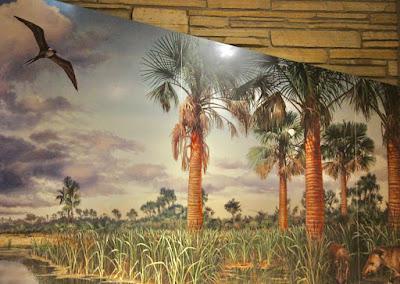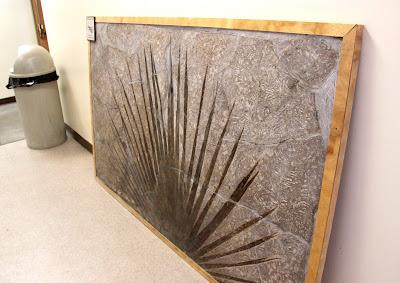A lake in southwest Wyoming, lined with palm trees!
This month there's little to report about the trees I'm following aside from a bit of green in the aspen canopy—emerging leaves I think (forgot binoculars). Instead I have news about a tree I tried to follow five years ago, a Wyoming palm. This was not an extreme cultivar able to survive -10º to -40 °F average annual minimum temperature but a native. However, Wyoming palms went extinct millions of years ago, and now exist only as fossils.Powell Palm, Sabalites powellii, at the U. of Wyoming Geology Museum (also called Palmites sp.).
That year (2017) I had hoped to visit Fossil Butte National Monument in southwest Wyoming, where the palms used to grow. I would go after finishing a field project nearby. But a June blizzard intervened. Three weeks ago, there was another opportunity, on my return trip from the Great Paleozoic Sea, but again a blizzard threatened. This time I ignored it, for awhile.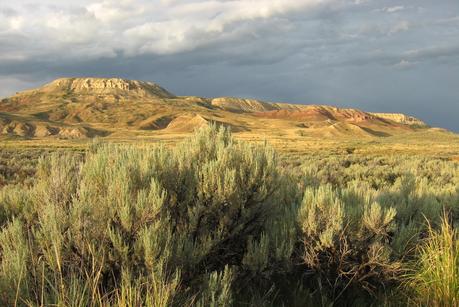
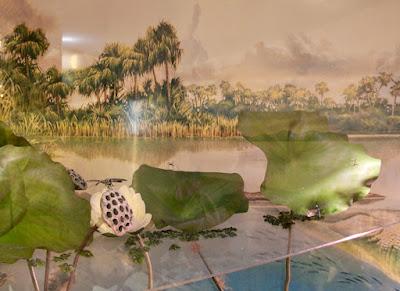
Lotus plants (Nelumbo sp.) in foreground; click to view dragonfly and mosquitos.
My first stop was the Visitor Center, small but packed with fossils and information. A ranger greeted me and offered a tour. "Absolutely!" I replied. "Can we start with plants?" I followed him to the Plant Wall. In addition to the familiar palm leaves, there was a palm inflorescence and many other plant fossils, with modern genera surprisingly (to me) well represented.
Plant Wall at Fossil Butte NM (NPS photo). Below left of the palm leaf on the right is a palm inflorescence.
Like today's palms, those at Fossil Lake had large inflorescences with hundreds of tiny flowers.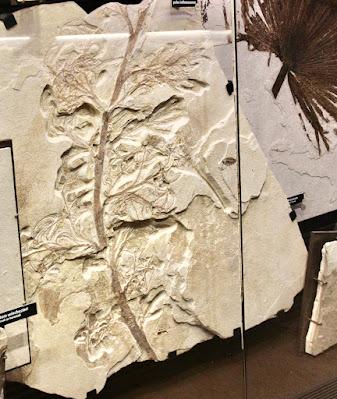
Fossilized palm inflorescence.
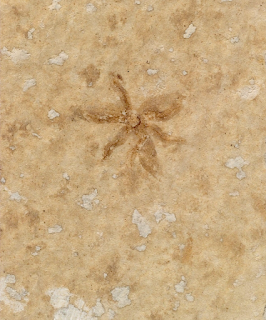
Fossilized palm flower (NPS photo), c. 8 mm across.
Fifty-two million years ago, in what would become southwest Wyoming and adjacent Utah and Colorado, there were three large lakes, larger even than our Great Lakes. These were Lake Gosiute, Lake Uinta, and Fossil Lake. The last was the smallest, but its sediments were especially rich in plant and animal remains. The now-lithified sediments of Fossil Lake are famous for abundant well-preserved fossils.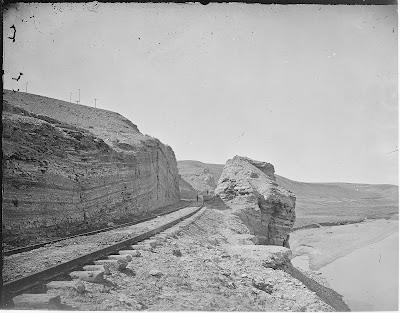
Petrified Fish Cut near Green River, Wyoming, excavated in 1868 during construction of the transcontinental railroad. William H. Jackson photo, 1869 (Hayden Survey) (source).
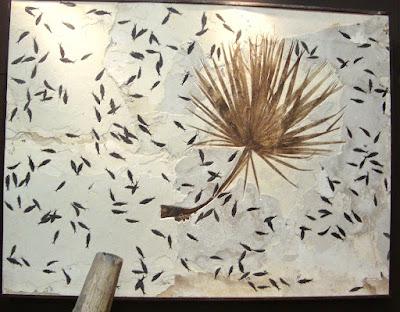
Fossil Lake's Knightia (the many small fish in this photo) is said to be the most common of vertebrate fossil in the world. It's also the state fossil of Wyoming (photo by Mike Nelson).
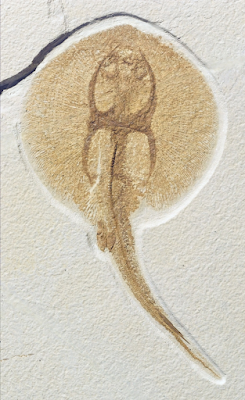
This ray fossil is an example of the exceptional preservation at Fossil Lake (NPS photo). As I learned on my visit, rays usually aren't well preserved because they have cartilage rather than true bones.
We finished the tour at a diorama showing southwest Wyoming 52 million years ago. Dioramas of ancient worlds have enchanted me since I saw my first, 60+ years ago. I've never outgrown them, though I now know there can be a fair amount of informed speculation involved.The many diverse creatures and plants preserved in Fossil Lake sediments indicate the climate was warm and humid. Vegetation along the shoreline was lush, with forests of palm, cinnamon, maple, and oak inhabited by mammals small and large, including some of our ancestors.
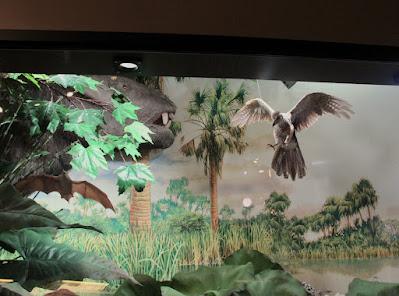
Yikes! Is that a giant oreodont approaching upper left?
As we finished, I asked the ranger about his background. Just five days earlier he graduated from university in California, then drove for two days to Wyoming, and went to work the next day. He was eager to share the joy of visiting the distant past, and his enthusiasm was contagious. Lucky me!Next I hiked the nature trail, past high desert cushion plants blooming profusely in light snow and howling wind. The blizzard was closing in. I decided to skip the old quarry, where I would have seen remnants of Wyoming palm habitat up close. That and much more await another visit. I raced home ahead of the storm, easy to do on Interstate 80 with a ferocious tailwind. Good mileage too.
Sources
Grande, L. 2013. The lost world of Fossil Lake. University of Chicago Press.
McGrew, PO, and Casilliano, M. 1975. The Geologic History of Fossil Butte National Monument and Fossil Basin. NPS Occasional Paper No. 3.
